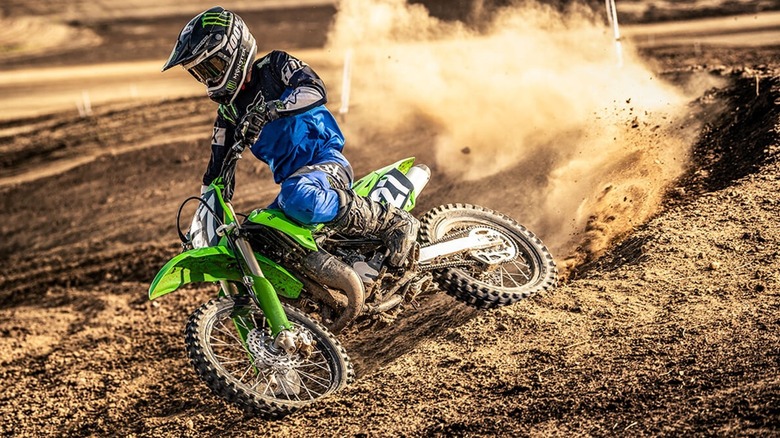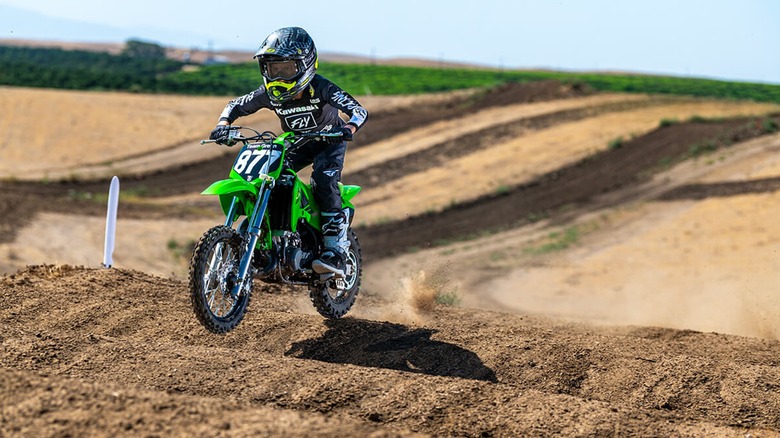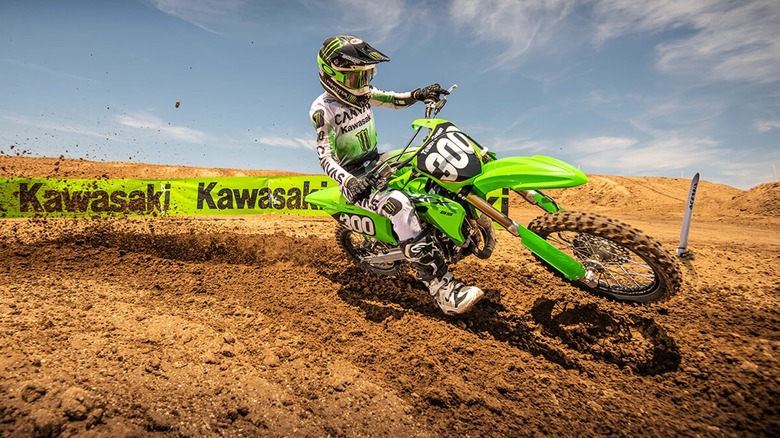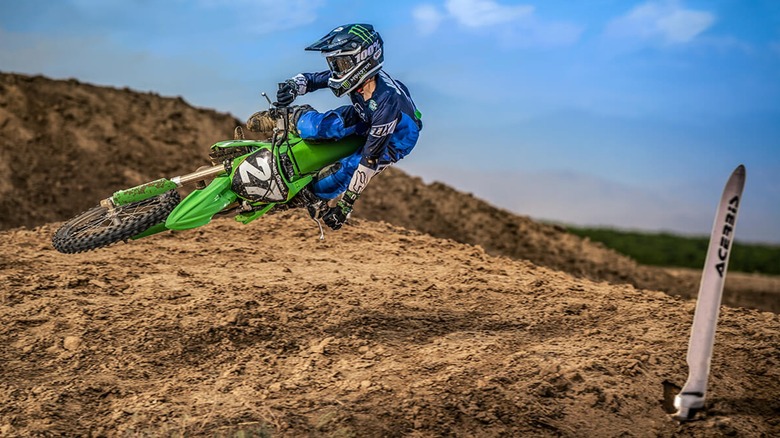Does Kawasaki Still Make 2-Stroke Motorcycles?
Unless you're familiar with dirt bikes, it might surprise you to learn that Kawasaki still makes a few two-stroke motorcycles. The two-stroke engine has largely disappeared from motocross above any classes primarily meant for younger riders. For many of the same reasons, Kawasaki has phased the two-stroke out of its street bike lineup in favor of the more fuel-efficient, lower emission, low-end torque production of the four-stroke.
The youth motocross classes are the foundation of professional motocross and supercross racing. The company's level of commitment to youth motocross is evident not only in Kawasaki's lineup of KX dirt bikes, but also in its contributions to the Kawasaki Team Green Racer Support Program.
The KX dirt bike lineup includes some of the most successful motorcycles in Kawasaki's long history. Until just after the turn of the century, the entire KX lineup featured two-stroke engines. For 2025, two-stroke KX dirt bikes are limited to Kawasaki's "Youth MX" models, including the KX65, KX85, and KX112.
The Kawasaki KX65 is great for young racers
The Kawasaki KX65 is a great dirt bike for young racers under 121 pounds and primarily between the ages of seven and eleven, according to the American Motorcycle Association's competition-class rules. However, one visit to an amateur national motocross race, or an area qualifier, reveals the difference between amateurs and beginners.
While many motocross racers start out riding 50cc motorcycles, the KX65 is still a good bike to learn on if they've missed the age cut-off for the smaller bike. With its $4,249 MSRP, the KX65 only comes in Kawasaki's Lime Green color scheme, has a 29.9-inch seat height, and weighs about 132 pounds ready to ride.
The Kawasaki KX65 features a single-cylinder, liquid-cooled, 64cc engine backed by a manual-clutch six-speed "return shift" transmission and chain final drive. "Return shift" requires the full engagement of each gear before another gear selection, up or down, is made. With the standard "one down, five up" shift pattern, neutral is located midway between first and second gear.
A "high-tensile steel semi-double cradle" frame provides the foundation for the Kawasaki KX65's suspension. Front 33mm forks with four-way adjustable rebound damping and 8.3 inches of travel combine with a "Uni-Trak single shock system" at the rear with 9.4 inches of travel to soak up some of the harshest bumps. The rear shock system allows stepless rebound damping with adjustable spring preload to dial-in the bike to terrain conditions and rider preference.
The Kawasaki KX85, the next step
As young riders progress and outgrow the KX65, the Kawasaki KX85 is the logical next step. Starting at $4,949 MSRP, the 2025 Kawasaki KX85 features a steel perimeter frame design with laiquid-cooled 84cc, single-cylinder two-stroke engine. Riders transitioning from the KX65 will find the six-speed manual-clutch return shift transmission and final chain drive familiar.
Larger 36mm inverted front forks offer 20-way compression damping and 10.8 inches of travel. An upgraded Uni-Trak single-shock rear suspension provides 24-way compression, 21-way rebound damping, and adjustable spring preload with 10.8 inches of rear wheel travel. The KX85 has 11.4 inches of ground clearance, a seat height that measures 32.7 inches, and weighs around 164 pounds filled with fuel.
The 2025 Kawasaki KX85 features "ERGO-FIT," to allow some customization of the bike to better fit the rider. In most cases, customization includes various seat, handlebar, and footpeg adjustments, or replacements, designed to increase rider comfort and control.
Kawasaki's biggest two-stroke, the KX112
The final step in the progression through Kawasaki's two-stroke motorcycle ranks, and another $700 jump in price, is the 2025 KX112 with its $5,649 MSRP. The Lime Green KX112 features a 112cc liquid-cooled, single-cylinder two-stroke engine with the familiar six-speed return shift manual clutch transmission and chain final drive, and ERGO-FIT.
The KX112 front forks have the same specs as the KX85, as does the rear suspension, except for the additional piggyback shock reservoir. Braking is provided by the same 220mm front and 184mm rear disc setup used on the KX85 as well.
Other than the difference in engine displacements, the most significant diversion between the KX85 and KX112 is in wheel and tire size. The smaller KX85 uses a 17-inch wheel up front with a 70/100-17 tire and a 14-inch 90/100-14 combination on the rear. Comparing those figures to the KX112's 19-inch 70/100-19 front and 16-inch 90/100-16 rear reveals a two-inch variation front and rear.
The KX112 also has a slightly longer wheelbase, which combined with the larger tires results in a longer overall length, more ground clearance, and a taller saddle. It's also a few pounds heavier, weighing about 170 pounds.



